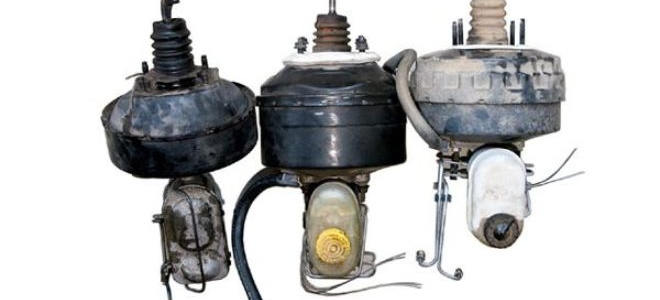Vacuum Brake Boosters are devices that assist drivers when they depress their car’s brake pedal. In short, they make braking easier. In dealership lingo, a car that has a brake booster has “power brakes.” And, you know how they feel during operation because almost every car manufactured in the last several decades has power brakes.

But, sometimes they go bad. The good news, accord to Bodwell Chrysler of Brunswick, a local Chrysler, Dodge, Jeep, Ram dealer in Brunswick, ME, is that when a brake booster fails, your car still has full braking; it just takes more foot power to push the brake pedal down to stop your car. If you ever have one fail on you, it’s best to have a mechanic repair it as soon as possible.
How Vacuum Brake Boosters work
The brake booster in your car helps multiply the pressure you apply to the brake pedal when you are braking. You can find the brake booster (a large, disc-shaped canister) mounted on the driver side of the firewall, inside the engine compartment.
Vacuum brake booster systems aren’t terribly complex. Inside the canister, a flexible diaphragm divides the booster into a front and a rear chamber, providing a tight seal between the two. On the outside, a thick hose connects the booster front chamber to the intake manifold for a source of vacuum power.
The brake master cylinder attaches to the front of the brake booster. On a conventional booster, at the center of the push rod, you’ll find a normally open valve that allows vacuum to enter the rear chamber. Also, the rear of the push rod works as a normally closed valve to keep atmospheric pressure out of the rear chamber until you push down the brake pedal. Thus, when the brake pedal is at rest, both the front and back chambers have vacuum in them.
So, when you step on the brake pedal to slow down or stop the vehicle, you actuate the rear valve and center valves. The rear valve opens, allowing atmospheric pressure to enter the rear chamber. At the same time, the center valve closes the diaphragm valve, blocking vacuum to enter the rear of the chamber. Then, atmospheric pressure and vacuum help you to push the rod against the master cylinder.
How do you know you brake booster is failing?
Sometimes you don’t know your brake booster is failing until you realize that you really have to push down hard to stop the car. There are a few other signs to look for too that may signal that your brake booster is on the way out.
- The first and most obvious is that you need to push your brake pedal down harder when you need to stop. You may even have to “stand on” the brakes to stop the car. Obviously this is a potentially dangerous situation so it is best to get your car to a mechanic ASAP.
- The brake pedal doesn’t return to its original position by itself. When all the valves and internal diaphragm are functioning properly, the brake pedal will return to its normal position after every stop. If it doesn’t then something may be wrong.
- This one may be less obvious. If the engine slows down when you step on the brakes, you may have a “brake-actuated vacuum leak.” The leak occurs when a valve, hose or diaphragm fails on your braking system and it always atmospheric air to enter your engines intake manifold.
Conclusion
The engineers that designed your car made sure that your power brake system will work under failure conditions. However, if you have a failure or feel the symptoms of one about to occur, bring your car to your local mechanic to have it checked out.
